The painting that won Jean-Honoré Fragonard (1732-1806) the first prize at the Grand Prix of Rome in 1752 was a far cry from the Rococo paintings that made him famous.
Many of his most famous paintings reflect the free attitude of the people at the French court during the final decades of the Ancient Régime.
Let’s take a closer look at some of the most interesting facts about The Bolt by Fragonard, a distinctive painting in the oeuvre of the artist of the Rococo era.
1. It was completed 4 years after it was commissioned in the 1770s
Jean-Honoré Fragonard was one of the leading figures of the Rococo era and the most prolific artist during the final decades of the Ancient Régime.
He completed about 550 oil paintings and numerous drawings and etchings. He was briefly trained by François Boucher (1703-1770), the other leading French artist who worked at the French court in the 18th century.
Fragonard earned the commission for The Bolt in 1773 but as he was overloaded with work during this period of his life, he only managed to complete it by 1777.
This was well over 2 decades after he had won the prestigious Grand Prix the Rome in 1752, an award that allowed him to study in Rome between 1756 and 1761.

2. The painting’s alternative name explains what it depicts
The Bolt, “Le Verrou” in French, is a painting also known as “The Lock.” This is a reference to the man who appears to be locking the room.
This dramatic scene is a perfect example of the flamboyant Rococo style of painting in the 18th century. Tow lovers can be seen locking themselves into a private room.

King Louis XV had plenty of mistresses himself and this promiscuous behavior was followed by just about everybody at the French court. This painting is a perfect example of that.
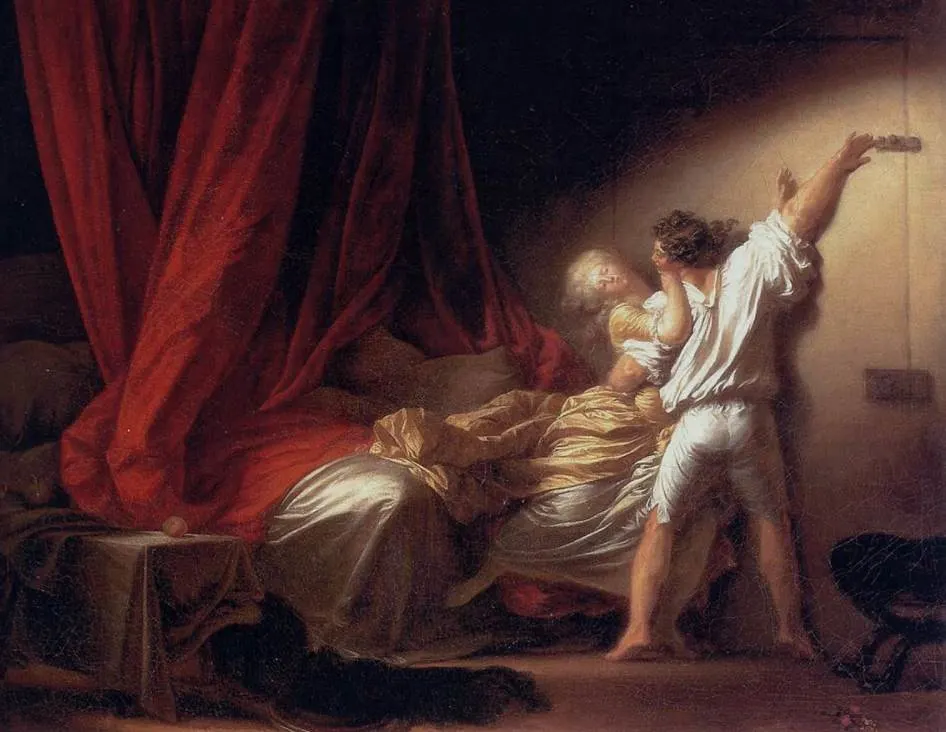
3. It was commissioned by a renowned aristocratic art collector
The Libertine spirit at the French court was the main source of inspiration for Rococo artists. They took great advantage of the rich patrons who wanted to impress their girlfriends with great paintings.
Paintings such as “The Swing” (1767) and “The Stolen Kiss” (the late 1780s) are perfect examples of the hedonistic lifestyle of aristocrats before everything came crashing down during the French Revolution.
This painting was commissioned by Louis-Gabriel Véri-Raionard, Marquis de Véri (1722–1785), an aristocrat and avid art collector who commissioned multiple similar paintings.
He was clearly an admirer of the veiled eroticism that Fragonard masterly managed to integrate into his paintings, that’s for sure.
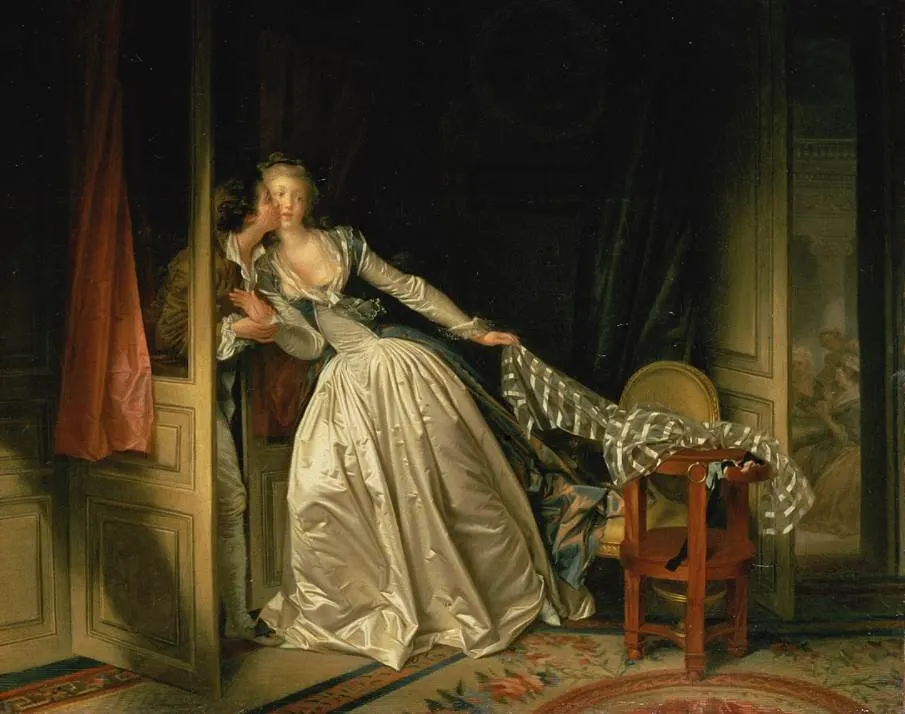
4. An etching was made of the painting several years later
Maurice Blot (1753-1818) was an etcher who copied the most popular paintings by the famous painters at the time.
Fragonard’s works were heavily copied during his lifetime and The Bolt was copied by Blot in 1784. It was a very popular work although it wasn’t held in very high regard in terms of quality.
These etchings turned out to be very important in the late 19th century, a period in history that Fragoanrd’s oeuvre was just about forgotten.
Fragonard only dated 5 paintings in his life. Because of the detailed description on these etchings, art historians managed to piece his incredible oeuvre together.
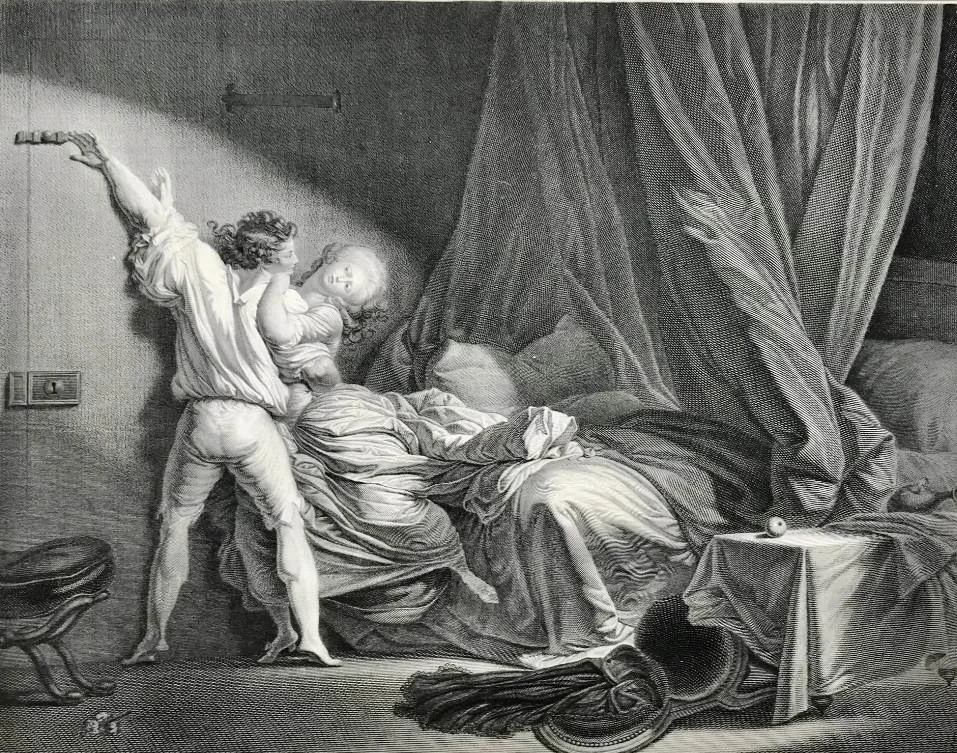
5. The etchings consisted of a series of 3 accompanying works
Many commissions that Fragonard earned are part of a series of paintings ordered by the same patron. These were intended to tell a complete story.
Some art historians have suggested that The Bolt was part of a series of 3 paintings that also included “The Armoire” and “The Contract.”
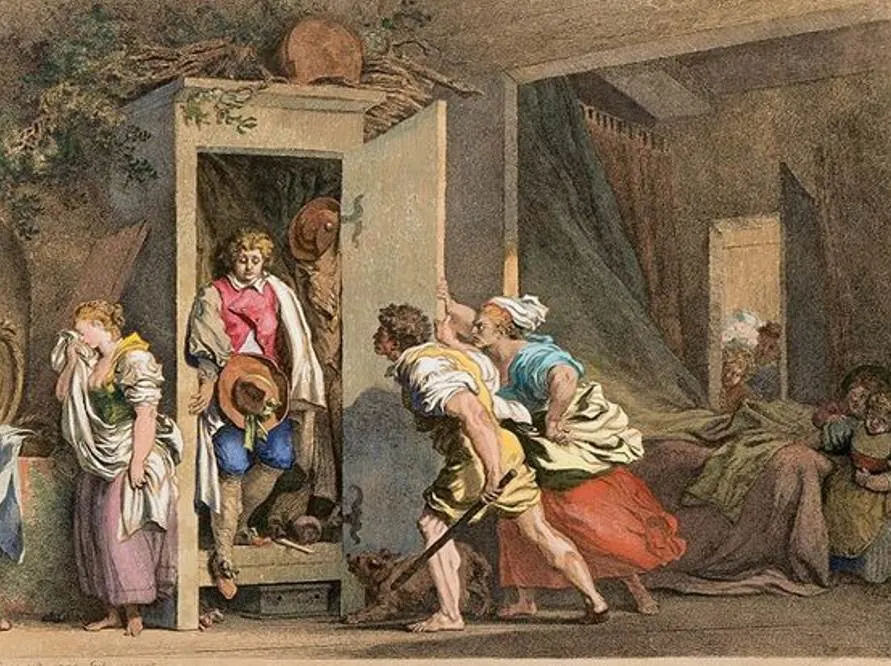
The Armoire depicts the scene in which the couple is being caught in the act in a closet. The Contract depicts the scene of the couple’s reconciliation.

6. The official pendant is in sheer contrast with the main painting
One of the most fascinating facts about Jean-Honoré Fragonard is that he didn’t start his career painting frivolous works of art.
He received formal academic training and won the Grand Prix of Rome in 1752 with a history painting called “Jeroboam Offering Sacrifice for the Idol.”
He produced paintings according to the wishes of his patrons who preferred works that included casual eroticism and hedonism.
The pendant of The Bolt is believed to be “The Adoration of the Shepherds” (1775), a painting that was also commissioned by the Marquis de Véri.
What’s remarkable about this accompanying painting is that it was suggested by Fragonard. It’s religious in nature and was probably intended to contrast libertine love and sacred love.
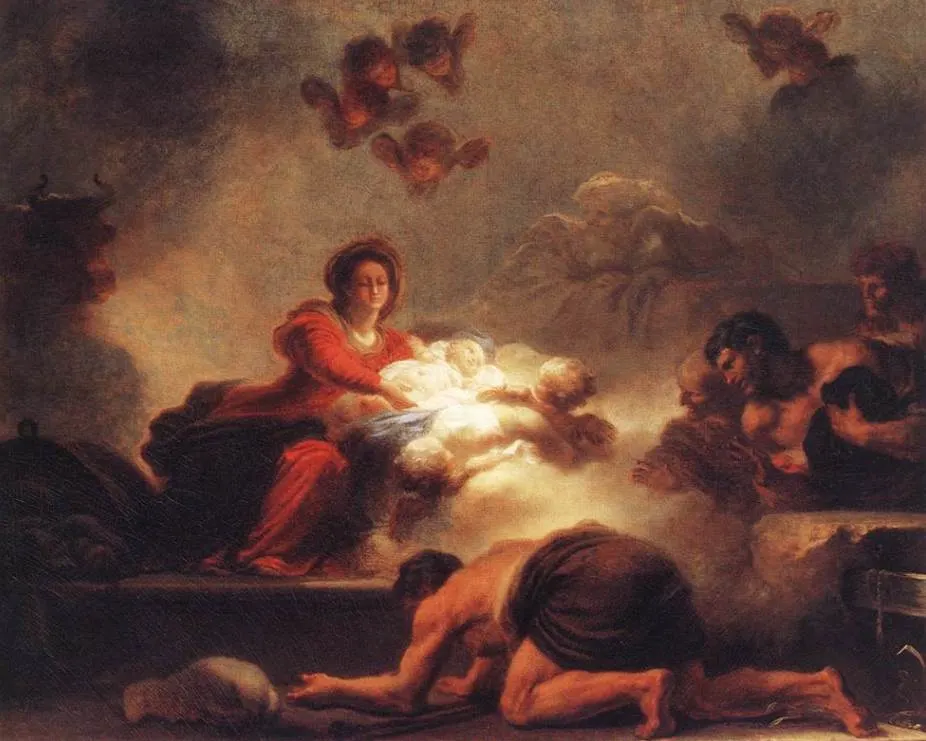
7. How big is the Bolt by Fragonard?
Fragonard’s history paintings were often monumental in size, while his frivolous works such as The Swing are relatively small.
The Bolt is an oil on canvas painting that is medium-sized with dimensions of 73 × 93 centimeters (29 × 37 inches).
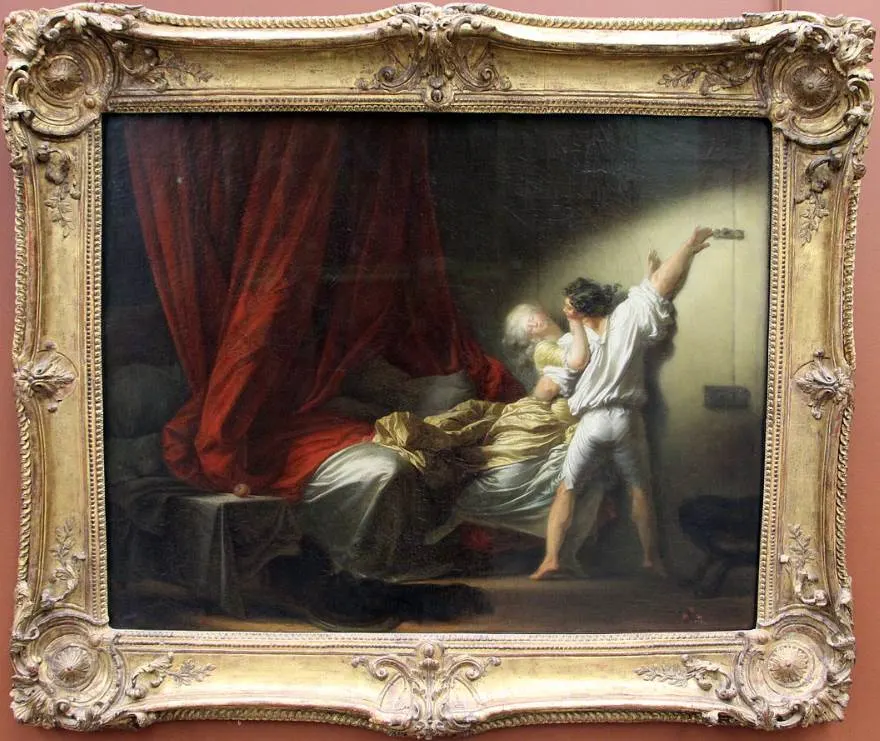
8. Where is the painting located today?
The painting was sold for the first time in 1785 when the Marquis de Véri passed away and his entire collection was put on auction.
It changed hands several times through the 19th century and hung at a castle named the Château de Rouville between 1887 and 1927.
It subsequently hung at the Palais Galliera, today the fashion museum of Paris. It was acquired by the Louvre Museum in 1974.
Today, you can admire the painting in the collection of the Louvre on the second floor of the Sully Wing along with several other 18th-century masterpieces.

